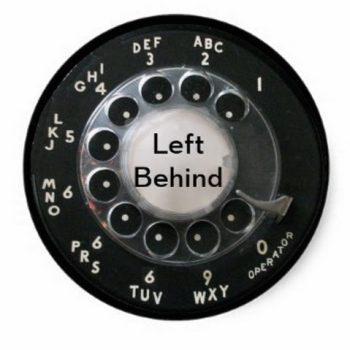Today is the cross-quarter day between the winter solstice and the spring equinox. It’s Candlemas, Imbolc and, here in Pennsylvania, Groundhog Day.
Groundhog Day is a strange little tradition, an annual non-holiday marking the midway point of winter and the hope for a coming spring. “If Candlemas be bright and clear / There’ll be two winters in the year,” the old saying said, and somehow we came to decide that a furry garden pest would serve as the definitive arbiter as to whether or not the day was, indeed, “bright and clear.” If the groundhog sees his shadow in the sun, the lore has it, then we’re due for six more weeks of winter. But if he doesn’t, then “Old winter shall not come again” and we’re in for an early spring.
For more than 120 years, the small town of Punxsutawney, Pa., has made a big deal out of Groundhog Day, successfully carving out a niche as the place most associated with the tradition. The town has marketed and defended its claim to be home to the foremost groundhog of them all, Punxsutawney Phil, “seer of seers and prognosticator of prognosticators.” They’ve created a unique little cottage industry out of the tradition, and good for them.
Punxsutawney’s annual celebration got a big boost in 1993 with the release of Harold Ramis’ comedy set in the town on its big day. When it first came out, Groundhog Day was well-received by critics, if not particularly acclaimed (although Ramis and co-writer Danny Rubin won a BAFTA for best original screenplay). It did OK at the box office. For critics and audiences alike, it seemed to be a pleasant and enjoyable little Bill Murray vehicle. Maybe not as funny as Stripes or Ghostbusters, but entertaining enough.
But it’s grown on us since then. Here’s Roger Ebert’s original review from 1993. He liked the movie. He enjoyed it. “The film is lovable and sweet,” he wrote, but it wasn’t destined for his 10-best list.
Now here’s Ebert revisiting the movie in 2005, not as a new release, but as part of his series on Great Movies:
Certainly I underrated it in my original review; I enjoyed it so easily that I was seduced into cheerful moderation. But there are a few films, and this is one of them, that burrow into our memories and become reference points. When you find yourself needing the phrase This is like “Groundhog Day” to explain how you feel, a movie has accomplished something.
That phrase gets used because it’s useful. The story’s motif of endless repetition is iconic, and it lingers in our language. But that’s not the main reason this story has, over time, become a better story than we first realized it to be. The main reason has to do with something Ebert noticed back in 1993, in the final line of his original review: “Just because we’re born as SOBs doesn’t mean we have to live that way.”
We like this story more than we initially realized we did because it’s about redemption. Lots of stories are about redemption, but this one was different because this one suggested how to go about it. As Ebert wrote after letting this story work on him for another 12 years:
Slowly, inexpertly, Phil begins to learn from his trial runs through Feb. 2. Ramis and Rubin in an early draft had him living through 10,000 cycles, and Ramis calculates that in the current version he goes through about 40. During that time, Phil learns to really see himself for the first time, and to see Rita, and to learn that he loves her, and to strive to deserve her love. He astonishingly wants to become a good man.
… Tomorrow will come, and whether or not it is always Feb. 2, all we can do about it is be the best person we know how to be. The good news is that we can learn to be better people. There is a moment when Phil tells Rita, “When you stand in the snow, you look like an angel.” The point is not that he has come to love Rita. It is that he has learned to see the angel.
He uses the same verb five times there: learn. “We can learn to be better people.”
That’s not a new idea. It wasn’t even a new idea when Aristotle was writing about it more than 23 centuries ago. Virtue, Aristotle believed, was a craft — it was something we had to learn. To be a good person, he taught, takes work. We have to learn how to be good, to study it, and then, above all, to practice practice practice.
Aristotle would have liked Malcolm Gladwell’s 10,000-hour rule. In his book Outliers, Gladwell suggested that expertise isn’t innate, but is something that only comes from practice — “10,000 hours of it — 20 hours a week for 10 years.” This is true for any craft, including the craft of virtue, of being a good person. It takes time and effort to acquire the skill and to turn it into a habit, a reflex, a trait.
When I first encountered this idea of virtue as craft, I found it exciting and even liberating because it was so different from the idea of virtue I had learned growing up in American fundamentalist Christianity. I had been taught to think of virtue as mainly a matter of avoiding sin — of abstaining from a long list of bad things. Virtue wasn’t something to do, but something you had because of all the things you didn’t do. It wasn’t a craft to be learned, developed and practiced, but a stockpile to be safeguarded and hoarded. It was as though we had each been given an initial supply when we were born again as innocents, and that finite supply had to be preserved, clasped tightly, and kept pure from a dangerous and poisonous world.
The best that one could hope for, in such a view, was that 10,000 hours later one might have vigilantly defended and retained most of one’s original purity so that one wasn’t any worse after all that time. But this view didn’t allow much hope for the possibility of becoming a better person.
So the idea of virtue as a craft gave me hope. And not just a vague, impractical kind of hope. This is the kind of hope that comes with an agenda, a curriculum, a course of study and a course of action and a regimen to practice.*
Groundhog Day is a helpful reminder of that hope. It points me toward an antidote to the negative notion of virtue as abstinence — of goodness as a stockpile of innate purity to be safeguarded. “Just because we’re born-again as SOBs doesn’t mean we have to live that way.”
Apart from that whole matter of virtue-as-purity, Groundhog Day endures as an antidote to something else as well. It directly confronts what may be the most damaging lesson that people my age learned from the movies, the montage lesson. Any problem could be fixed and any life completely transformed, we were taught, in a two-minute montage set to an upbeat pop song.
David Wong describes the dangers of this lesson in his essay, “How The Karate Kid Ruined the Modern World“:
You know what I’m talking about; the main character is very bad at something, then there is a sequence in the middle of the film set to upbeat music that shows him practicing. When it’s done, he’s an expert. …
Every adult I know — or at least the ones who are depressed — continually suffers from something like sticker shock (that is, when you go shopping for something for the first time and are shocked to find it costs way, way more than you thought). Only it’s with effort. It’s Effort Shock.
We have a vague idea in our head of the “price” of certain accomplishments, how difficult it should be to get a degree, or succeed at a job, or stay in shape, or raise a kid, or build a house. And that vague idea is almost always catastrophically wrong.
… The world demands more. So, so much more. How have we gotten to adulthood and failed to realize this? Why would our expectations of the world be so off? I blame the montages. Five breezy minutes, from sucking at karate to being great at karate, from morbid obesity to trim, from geeky girl to prom queen, from terrible garage band to awesome rock band.
We can’t master karate, fix up the old boat, renovate the old mansion, or get in shape to fight Drago in “five breezy minutes.” It’s more likely such things will take about 10,000 hours. And that’s a lot of work. A lot more work than any of those montage movies seems to suggest.
Those movies show training montages because watching the actual training wouldn’t be entertaining. That’s because doing the actual training isn’t entertaining. It’s doing the same thing, over and over and over.
That’s what it takes, and that’s what Groundhog Day tries to remind us of. Redemption doesn’t come in five breezy minutes. It takes work — hard, repetitive work and lots of it. But the good news is that we can learn to be better people.
– – – – – – – – – – – –
* I can see the phrase “works righteousness” rising to the lips of my very Reformed friends. They are eager to remind me of Augustine’s warning that work is not sufficient for redemption. OK, but we’re not talking about Augustine here, we’re talking about Aquinas, who reached back to Aristotle to remind us that work and practice are necessary. Regarding the particular story we’re discussing here, one could argue that Groundhog Day shows the necessity of grace in that Phil’s redemption only occurs in the context of a magical or miraculous intervention, but that’s still probably way too Arminian-sounding to my very Reformed friends, as most things tend to be.












